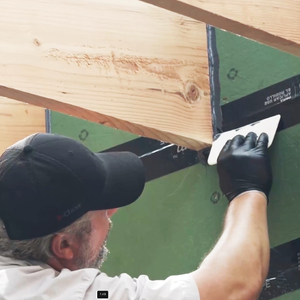Help me settle a debate about hanging a cabinet please!
Ok, the preface- I’m a nurse manager but quite competent with tools. I’m not a pro.
Last week on my hospital unit a cabinet fell off the wall after being installed 2-3 years ago. I looked at the wall and cabinet afterward and could not believe it. The wall is sheetrock over old tile, and apparently has a masonry wall behind that. A cabinet about 4-5 feet wide was hung on 4 pieces of 1/2 in plywood with some drywall screws. The plywood was fastened to the wall with construction adhesive and masonry nails. The top 2 pieces of plywood let go first, then the screws ripped out of the bottom 2 pieces. One of the screw heads pulled thru the back of the cabinet. If anyone was at the desk below they would have been injured. It seemed obvious to me this was poor workmanship.
However, when we called the contractor back to fix it, the guy insisted to me that the only problem here was that nails were used instead of screws into the wall. To me that’s only 1 issue of many. How should this have been done?
Appreciate your input.


















Replies
As another non-pro, the anchorage to the wall should have been toggle bolts or something of equivalent reliability & pull-out resistance. Simple nails or screws are not sufficient (though special masonry screws would be fine if properly installed).
And a half-inch piece of plywood is just barely enough "meat" to hold the screws from the cabinet, but only if the screws can penetrate through about 3/4", which they can't because there's tile behind the drywall.
And, as Piffin will tell you, drywall screws should not be used to secure a heavy cabinet. "Structural" screws (such as GRK cabinet screws) should be used.
As to how it probably should have been done -- anchor the plywood to the wall better, hang the cabinet, then, along the top inside the cabinet, install several more fasteners (toggle bolts, wedge bolts, masonry screws, etc) that go through into the masonry. And a couple of such fasteners near the bottom wouldn't hurt.
Or use cabinet hangers that come in mating halves -- anchor one half to the wall and the other half to the cabinet, then hang the cabinet and install a few lighter screws into the plywood just to hold the cabinet snug to the wall.
That 2 part system DanH is reffering to is called a "French Cleat". It has two long boards nearly the width of the cabinet. Each board has an angle cut in one edge, like a 45 degree angle chopping off one corner. On board is mounted to the wall and the other is mounted to the cabinet. They are mounted so that when the board on the cabinet is set down on the board to the wall, both cut angles meet. The one on the wall slopes to the wall, so the assemble is pinned to the wall and supported across it's whole length. It's also level, presuming both boards were mounted level to the wall and to the cabinet.
My ears were burning
I rail against using drywall screws for cabinets so much on these forums that the guys have renamed the brittle little things "Piffin screws"
But
It sounds like the primary failure here was in the ply to SR adhesive. A well adhered backer would never part from the SR
I do question tho whether it was the adhesive to paint or the pain to SR bond that actually failed.
Were I doing an install of this type, i would use 3/4" pine or poplar, PL Premium Construction adhesive, and the GRK caliburn concrete fasteners or Tapcons for the mechanical attachment., Then structural cabinet screws to hook the cabinet to the track mount.
The described attachment is below my standards, but is extremely common, othere than the nails instead of screw or toggler type concrete fasteners. That detail is indeed, unprofessional, IMO
The failure as noted was due to the use of masonry nails. Tapcons or other appropriate masonry anchors would have kept the plywood on the wall.
For cabinets, I really like the Fastcap system - http://www.fastcap.com/estore/pc/PowerHead-Screws-c11.htm because the screws have 1/2" diameter heads (which get concealed) - see photo.
For heavier-use cabinets, I like to see a full 1/2" plywood back so that it can be fastened anywhere.
Jeff
If only...
"... the guy insisted to me that the only problem here was that nails were used instead of screws into the wall."
Key to your discussion with him is his use of the word: only. There is a huge difference between the pullout resistance of screws and nails. He made a big mistake there and seems to be choosing his words to minimize it.
Ever try to use a claw hammer to pull a screw out of a board?